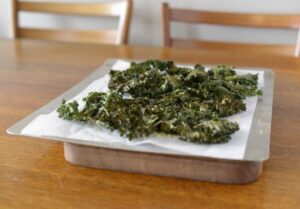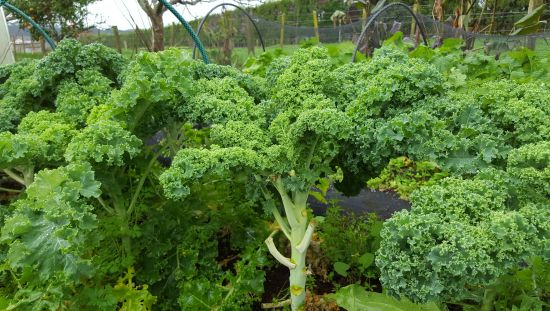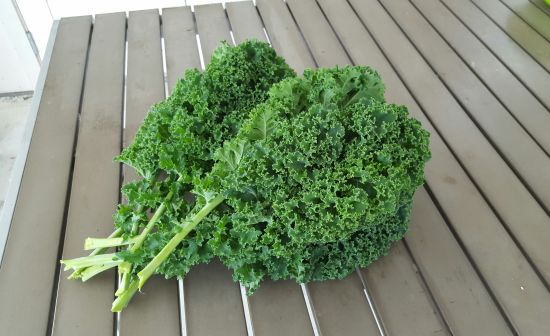
Kale is the ultimate trendy vegetable. It sits firmly at the top of the ANDI (Aggregate Nutrient Density Index) along with mustard greens, collards and watercress.

Kale is a brassica, the family that includes broccoli, cabbage, cauliflower and collards. It’s a winter vegetable, thriving in cool or cold conditions when pests and diseases can’t survive. In warmer weather kale, like all brassicas, is susceptible to the white butterfly laying eggs which turn into the destructive caterpillars. You can grow kale in spring and autumn as well as winter, but you’ll need to use sheep manure and neem pellets in the planting hole, cover your plants with a net and if you do get an infestation there are organic sprays that will deal with the caterpillars.
When growing food organically it’s best to grow in the optimal season with optimal soil and growing conditions. In summer, there are a host of other vegetables that will take the place of kale in your diet and then you’ll appreciate the reintroduction of kale come autumn.
Brassicas like a soil enriched with lots of organic matter. If your soil is low in nutrients, plants will either die or go to seed quickly. With many vegetables we’ll put additives in after they’re planted so that watering and rain take the nutrients down to the plants’ roots, but with brassicas we mix them into the soil beforehand. Brassicas are a crop that needs feeding during the growing period as well, and it’s at that time that we’ll apply fertiliser and compost superficially.
We recommend adding compost, chicken manure or sheep pellets, coffee grounds and rock dust to your soil before planting. Brassicas don’t like an acidic soil, so if you’re adding coffee grounds also add lime to neutralise them. You need to add lime if you’re planting into a bed that’s had an acid-loving crop, like tomatoes, in it previously. Fork it all in, and rake over to make the surface even for planting. Plant about 30-40 centimetres apart.
Brassicas like lots of water during the growing season, so once you’ve planted the seedlings, give them a good water. Add mulch to keep the moisture in. Mulch also adds carbon matter to the soil and suppresses weeds. Give the plants one last water to bed it all in.

Like most winter vegetables, the taste improves after the first frost. In fact, we recommend you don’t harvest kale until after one or two hard frosts (if you get frosts, that is).
The leaves of kale toughen as they get older, so harvesting tender leaves that are less than 30 centimetres long ensures the best taste experience. And harvest regularly – this way the plant will keep producing new leaves from its centre.
Website designed by www.thecornerstorecollective.com
Developed by Richard Hpa